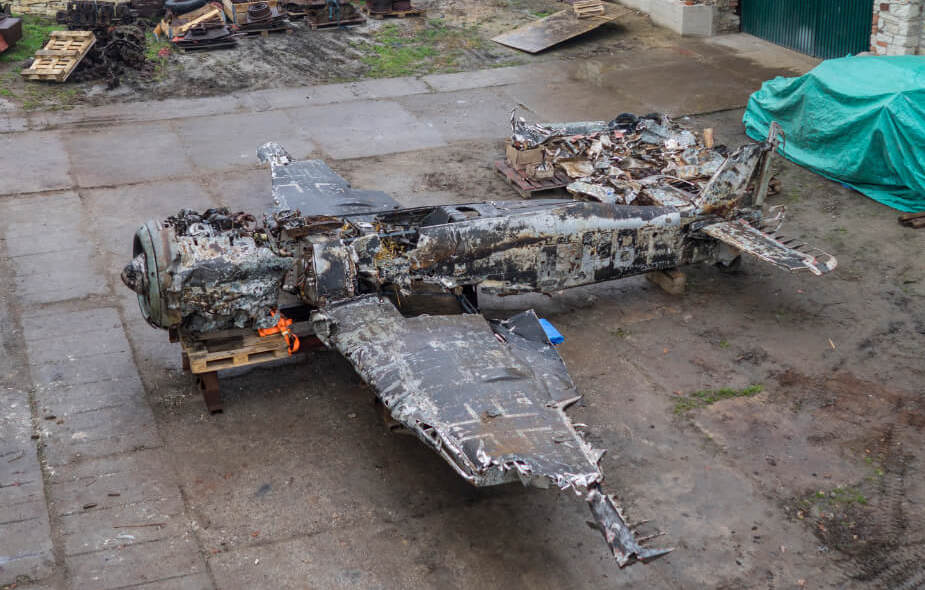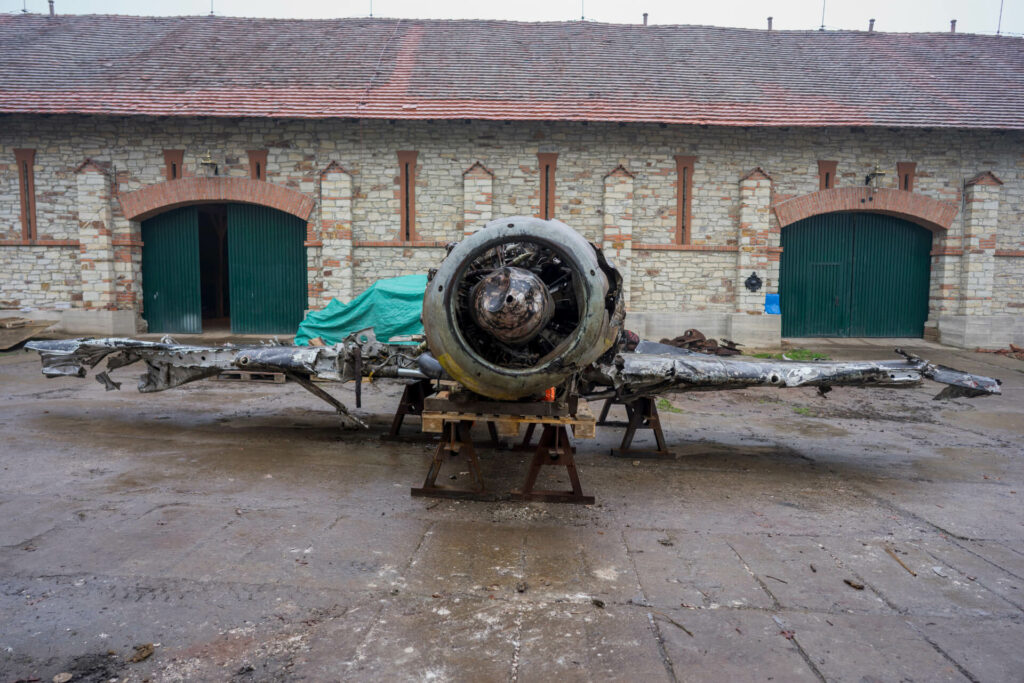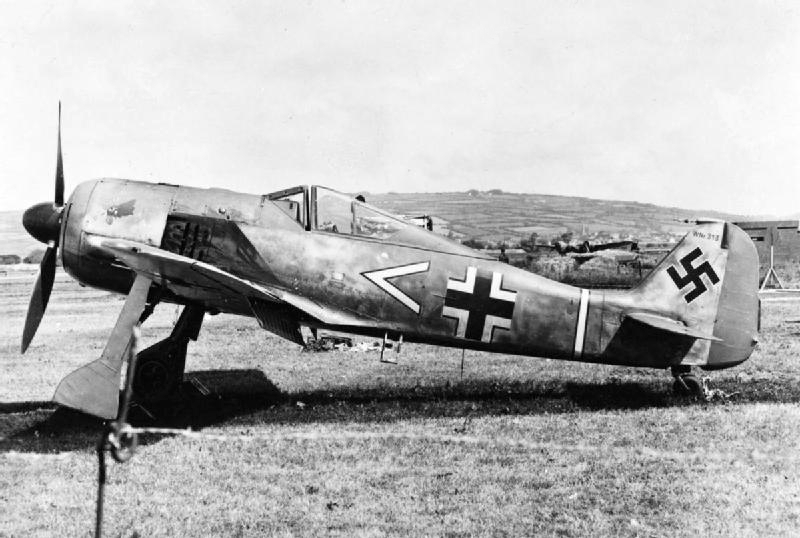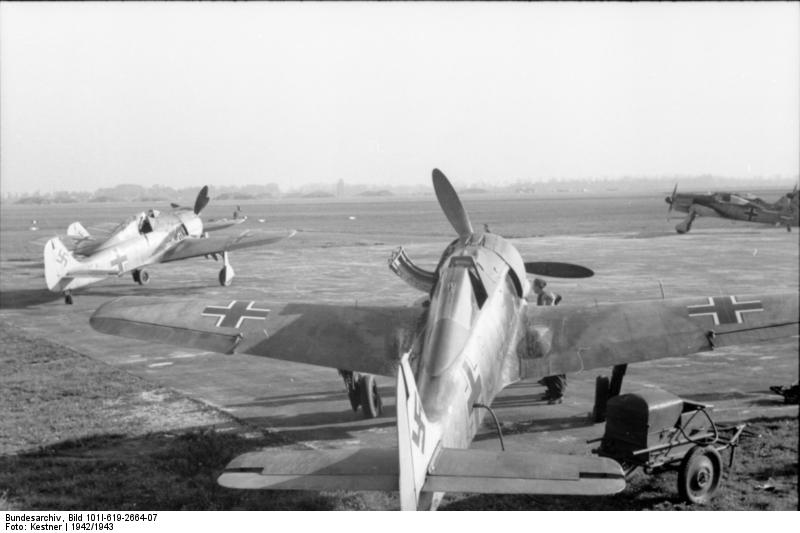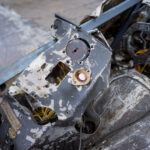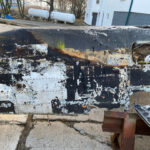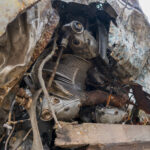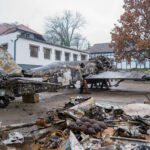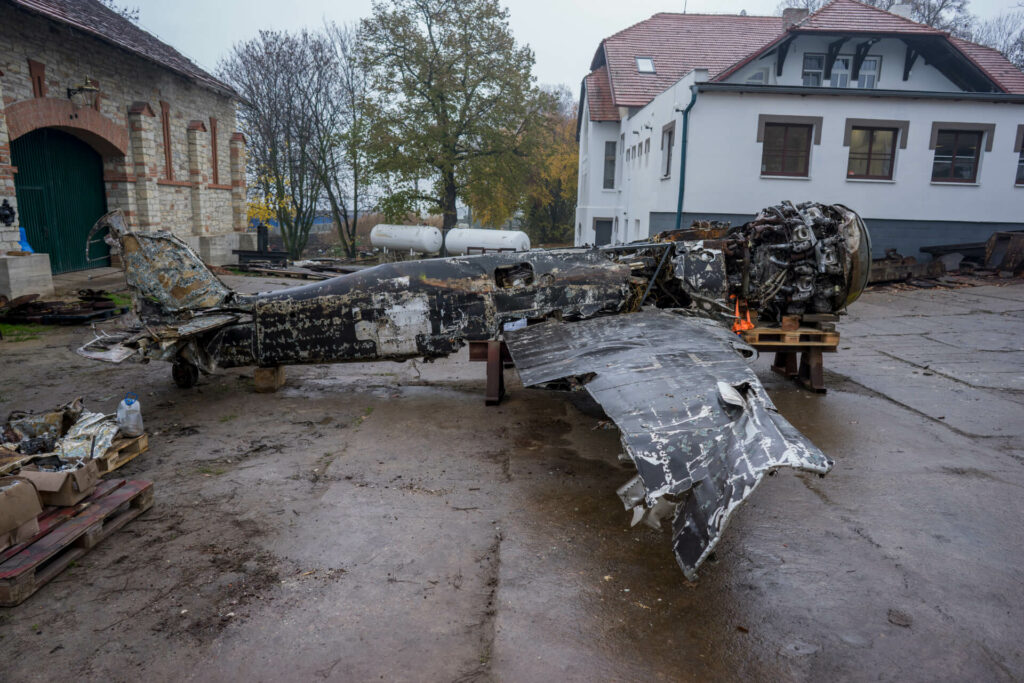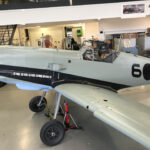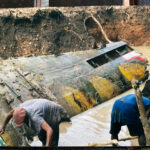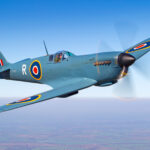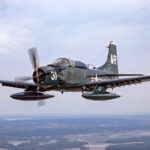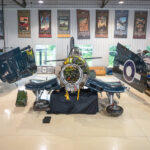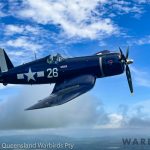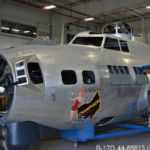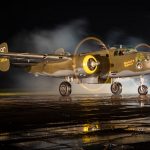Periodically, we highlight vintage aircraft listed for sale with one of our sponsors, Platinum Fighter Sales. One of their newly-listed airframes which really caught our eyes is a rare 1944 Focke-Wulf Fw190 F-8 described in the text and images below.
The Focke-Wulf Fw190, nicknamed Würger (Butcher Bird) is a German single-seat, single-engine fighter aircraft designed by Kurt Tank at Focke-Wulf in the late 1930s and widely used during WWII. Along with its well-known counterpart, the Messerschmitt Bf109, the Fw190 became the backbone of the Jagdwaffe (Fighter Force) of the Luftwaffe. The twin-row BMW 801 radial engine that powered most operational versions enabled the Fw190 to lift larger loads than the Bf109, allowing its use as a day fighter, fighter-bomber, ground attack aircraft, and to a lesser degree, night fighter.
The Fw190A started flying operationally over France in August 1941 and quickly proved superior in all but turn radius to the Spitfire Mk. V, is the main front-line fighter of the RAF, particularly at low and medium altitudes. The 190 maintained superiority over Allied fighters until the introduction of the improved Spitfire Mk. IX. In November/December 1942, the Fw190 made its air combat debut on the Eastern Front, finding much success in fighter wings and specialized ground attack units from October 1943.
The Fw190A series’ performance decreased at high altitudes, which reduced its effectiveness as a high-altitude interceptor. From the Fw190’s inception, there had been ongoing efforts to address this with a turbosupercharged BMW 801 in the B model, the much longer-nosed C model with efforts to also turbocharge its chosen Daimler-Benz DB603 inverted V12 powerplant, and the similarly long-nosed D model with the Junkers Jumo 213. Problems with the turbocharger installations on the -B and -C subtypes meant only the D model entered service in September 1944. These high-altitude developments eventually led to the Focke-Wulf Ta152, which was capable of extreme speeds at medium to high altitudes (469 mph) at 44,300 ft. While these “long nose” 190 variants and the Ta 152 derivative especially gave the Germans parity with Allied opponents, they arrived too late to affect the outcome of the war.
The Fw190F-8 was based on the A-8 Fighter, having a slightly modified injector on the engine compressor which allowed for increased performance at lower altitudes for several minutes. The armament of the Fw 190F-8 was two 20 mm MG 151/20 cannon in the wing roots and two 13 mm (0.51 in) MG 131 machine guns above the engine. It was outfitted with an ETC 501 Bomb rack as a centerline mount and four ETC 50 bomb racks as underwing mounts.
The Fw190 was well-liked by its pilots. Some of the Luftwaffe’s most successful fighter Aces claimed many of their victories while flying it, including Otto Kittel, Walter Nowatny, and Erich Rudorffer. The Fw190 had greater firepower than the Bf109 and, at low to medium altitude, superior maneuverability, according to the German pilots who flew both fighters. It was regarded as one of the best fighter planes of World War II.
History
The substantial wreckage of Fw-190F-8, Wk Nr 581808, was recovered near the town of Priozersk, Russian Karelia, during the Summer of 2019. Loss records reveal that the 190 belonged to 1./SG-5, and was coded Q9+BT. The aircraft was one of 16 Focke-Wulf Fw190F-3 and F-8 ‘Jabos’ (fighter-bombers) based at Alakurtti, Finland, which was part of ‘Detachment Kuhlmey’. This Luftwaffe Unit was formed temporarily and dispatched to the large Finnish Air Force base at Immola in June 1944 to help counter large-scale Soviet offensives during the ‘Continuation War’. The Unit had around 70 aircraft on strength comprising Ju87s, Fw190s and Bf109s. On 4 August, whilst being piloted by Alfred Kruppa, this Focke-Wulf was engaged and hit by Soviet Hurricanes. Kruppa bailed out, landed in the Vuoksi River, and did not survive.
Fw190F-8 Wk Nr 581808 is a time capsule and is one of the most complete Fw-190’s in existence.
Many restorations to fly have started with much less. 581808 would make an excellent candidate to be rebuilt to flyable condition. Currently located in Minnesota, USA, and is available for inspection by appointment only. For further details on this beautiful piece of aviation history, be sure to contact Platinum Fighter Sales!







